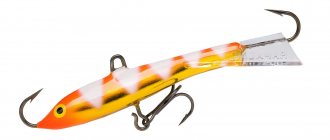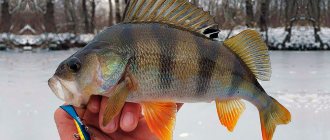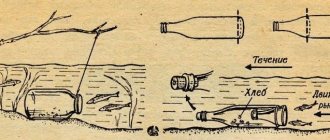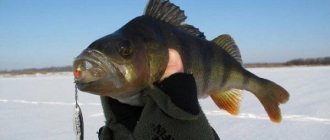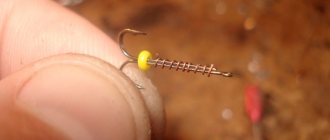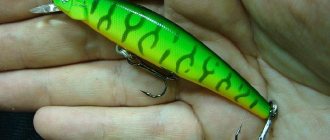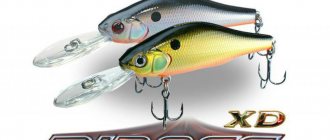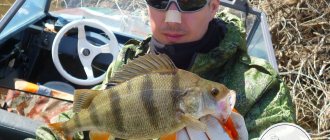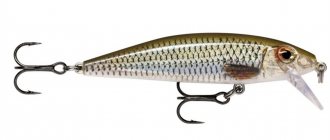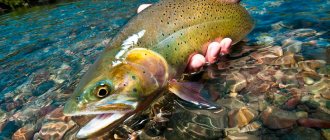Yuri 02.11.2020 338
The fishing arsenal of an advanced spinning angler consists not only of classic spinners, but also other, no less catchy types of artificial bait. Among them are all kinds of spinnerbaits, poppers, wobblers and rattlins of various shapes and colors, designed for catching fish in any conditions.
This article will talk about another catchy spinning attachment for catching predatory fish, called Walker. Translated from English it means “walker”. Among experienced spinners, this bait is also known as Walker, Walker, Walker, reveler, walker or runner.
Differences between Walker and Popper

For the popper to gurgle, light jerks with the tip of the spinning rod are required, during which the bait almost does not move from its place, but makes characteristic sounds. As for walkers, they require more space to work effectively, because these lures are focused on horizontal movement.
Poppers are good for spot fishing. For example, the sounds and vibrations of these baits in a “window” among aquatic vegetation may well lure out a predator lurking nearby. It is also more convenient to use poppers to fish coastal areas overgrown with reeds and water lilies. Walkers are more suitable for fishing relatively large areas of a reservoir. For example, such baits can attract pike when fishing in a wide, shallow bay.
It is also worth saying that it is easier to learn how to properly spin poppers than walkers, so we recommend that novice spinning players first practice with poppers.
For more information about poppers, read this article at the link - fishing with poppers
What is a walker
Usually they say about it that it is a spoiled version of a wobbler or popper. Externally, the bait does not particularly stand out. Its body is elongated, often slightly curved, making it look like a banana.
Walker is a voluminous bait with a streamlined front part of the body. There is no blade (like a wobbler) or a notch (like a popper) in front, so when moving, it does not dive with its bow into the water column and does not make gurgling sounds. It moves in a zigzag manner, scouring the surface layer of water.
The upper part of the body is curved, the lower part is convex. It is equipped with two tees: one at the bottom, approximately in the middle of the bait; the second is attached to the tail. The body is balanced so that the head part is always above the surface of the water, the rest can take any position in relation to the latter - it specifically depends on the location of the center of gravity.
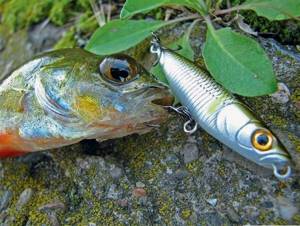
What kind of fish do they catch?
Universal bait. It may be of interest to pike, perch, pike perch, and asp. The most common fish caught is pike. Initially, it was created for hunting, and more specifically, for catching grass pikes lying in ambush among algae.
Perch is also a common predator. Stripers are especially good at catching if they come across a school. Moreover, the size of the prey may be smaller than the one attracted from the artificial fish.
Pike perch can be prey during night fishing, when it goes to shallow places in search of food. Asp can be caught more often on the rifts.
When they catch
The best conditions for use are light ripples on the surface of the reservoir and a slight breeze. When the latter increases to 4 m/sec, it becomes difficult to catch. In such conditions, the trace of the movement of the artificial fish is not visible, and its play is lost. It becomes simply invisible to predators.
Postings
Most often, spinners lead it evenly, making equal jerks. Wiring is considered effective when a series of small jerks are performed every 5...7 m. It is advisable to take short pauses, change their duration and quantity. In this case, jerks are made immediately after the pause.
Spinners also use torn wiring. First, do 2...3 short jerks, then a 5-second pause follows. This wiring gives good results on heavily overgrown reservoirs, when the walker remains within the existing windows during a pause.
Walker wiring

The basis of the walker wiring is a system of jerks and pulls of varying strength. Thanks to its specific shape, the bait moves with alternating deviations, either to the right or to the left, which is why this type of wiring is sometimes called “snake” or “snake wiring”.
The trajectory and degree of deflection of the walker during movement depends on its dimensions and body shape. In view of this, the optimal wiring option is selected directly in practice.
Wiring methods
The frequency and speed of the walker, as well as the amplitude of its movement, directly depend on the size and weight of the bait. Under different conditions, the wiring of the “reveler” can be uniform or chaotic, as well as combine jerky pull-ups and pauses.
When fishing, you should alternate fishing methods, choosing the most effective one that can provoke an attack from a predator. Quite often you can notice in advance a predatory fish chasing a wobbler, but not daring to attack. In this case, the attack can be provoked by a normal stop of the wiring or a pause in movement, after which, as a rule, a sharp bite follows.
Walker with propeller - propbait
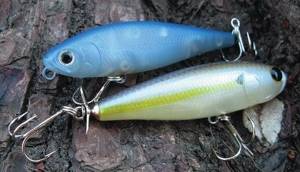
Propbaits are surface baits that are shaped very similar to walkers or minnow wobblers. But walkers are very interesting due to the presence of propellers that create additional vibrations in the water. Prop baits can have multiple propellers, i.e. at the front and/or at the back.
The best weather for fishing with propbaits will be calm and sunny, as the bait will stand out strongly against the calm background. You need to fish with such baits in warm weather, when predatory fish feed in shallow water or near the surface of the water.
For a more detailed description of propbaits, wiring, varieties and other fishing secrets, read the article “fishing with propbaits.” At the end of the article there will be a very interesting video from the Shcherbakovs on fishing with propbaits.
Walker Features

Walker is a close relative of popper. It is also designed for catching predatory fish from the surface of the water in heavily overgrown or snags. But unlike a popper, this bait does not have a loud splashing recess in the nose; only some models have a small recess. There is also no blade - the main working element of classic wobblers. Outwardly, it is a small artificial fish that very accurately imitates the prototype.
Almost every Walker has a convex belly and a concave back. Thanks to this unique shape, during wiring, it makes zigzag movements (as if prowling around), leaving a characteristic trail behind itself. It's similar to how a grass snake swims.
During pauses, he floats up, but you just have to make a couple of turns, and his head dives under the water again. Depending on the center of gravity, the bait can be at different angles relative to the surface, occupy either a horizontal or almost vertical position. But the tail section is always lower than the bow.
Where to fish with walkers
Walkers perform best when fishing in bodies of water with slow currents. Almost ideal places for walkers are shallow areas with no current at all, but with an abundance of vegetation, where pike and perch are often found.
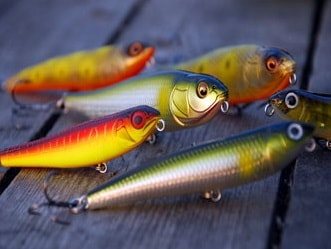
Purpose
The Walker surface bait refers to topwater wobblers that do not have a front blade for deepening. The bait has an elongated body shape, vaguely reminiscent of a Cuban cigar. The active movement of the walker along the surface of the water resembles yaw from side to side, or zigzag movements in a herringbone pattern. When freezing, the wobbler takes a horizontal or vertical position on the surface of the water.
The “walker” is made of plastic and wood, equipped with two treble hooks. The bait is excellent for surface fishing in difficult conditions for chub, pike, perch, asp, and pike perch. This attachment works best when guiding in areas heavily overgrown with aquatic vegetation, as well as with natural underwater obstacles.
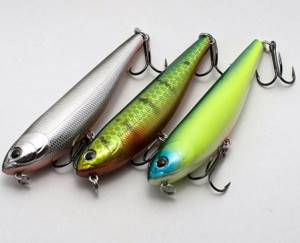
The attack of a “walker” by a predatory fish is incredibly spectacular, since the moment of the bite occurs in front of the fisherman’s eyes. The most memorable experiences happen when fishing for pike, because it is this predator that is most often caught with this bait.
Advantages and disadvantages
Among other lures, the Walker has the following features, which are also its advantages:
- excellent flight qualities of the nozzle, which are ensured due to the shape and structure of the body. The absence of a front blade for deepening also has a positive effect on aerodynamic flight characteristics. Some models of wobblers are equipped with weights that move freely inside the “walker” or on the rod. These simple devices increase the casting range of the walker;
- presence of noise effects. The presence of a “rattle” in the cavity of a topwater can attract an active predator even from a considerable distance. Some models may be equipped with propellers that create noise and vibration. Such baits are called “propbaits”. An exception to fishing with such bait is when catching cautious and timid fish. For such fishing it is better to use silent baits;
- Possibility of fishing in difficult fishing conditions - in shallow water areas that are heavily silted and overgrown with aquatic vegetation.
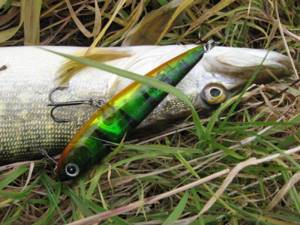
Among the disadvantages of the bait, one can highlight only its ineffectiveness when fishing in deep water areas. But this is rather an individual feature, because the bait is superficial and requires its use in specific conditions, in shallow and heavily overgrown areas.
Spring pike
At the end of spawning, pike hunt mainly in shallow water, where the vegetation has not yet fully risen.
It is in such places with free water that small fish often bask, on which the predator feeds.
Walkers, despite their small size, have good flight properties, and therefore allow you to cast over fairly long distances.
So, without once again scaring the pike, you can lure it out with an active walker, in which the predator will see a potential victim.
The best walkers - top 5 catchy baits
Rapala X-rap Walk
The bait is floating and works well for pike and perch. High quality, durable coating. Easy to carry out. Reliable hooks from VMC. Equipped with a tail, which additionally “turns on” the predator. Available in seven colors. There are sizes 9, 11, 13 cm. Quite heavy - you can throw it far.
Rapala X-rap Sub Walk
Walker is similar to the previous one in all characteristics. It is distinguished by the presence of spoiler wings in the tail section. Because of the latter, it moves, plunging several centimeters into the water column. This feature often turns out to be decisive when fishing for pike.
Koppers Frog Walking
This is a classic. The bait is naturalistic and beautiful. Inside the body there is a long-distance casting system made from a moving ball. The latter allows you to throw it not only far, but also exactly to the right place. The presence of the ball adds a clicking sound to the wiring, which is an additional irritant for the predator and can attract it from a long distance.
Megabass X-Pod
The baits are Japanese, with handmade elements, high quality, and therefore expensive. The front part is shaped like the head of a fish with an open mouth. The lower jaw is made with the ability to adjust its position. If the jaws are closed, it becomes a classic walker; if it is open, it acquires the characteristics of a popper.
The body has a chamber with a ball. The latter, when conducting, provides additional clicks, attracting the attention of the predator. The length suitable for pike is 10.8 cm and weighs 22 g. The weight allows you to cast far and accurately.
Strike Pro EG-029F
Despite its small (8.5 cm) size, this type of wobbler is catchy and can be cast over long distances without problems. There is a balancing ball in the body that produces additional noise during wiring. The latter is best done with small, frequent jerks.
Catching pike with walkers in summer
In the summer, when aquatic vegetation has reached its maximum, pike often hang out in open water, but close to the grass carpet. In this case, wiring along the border of this carpet is good: while the bait is moving in close proximity to the thickets, the pike often comes out of its hiding place and attacks the walker. Sometimes several predators are active in the same area.
Also in summer you can try to catch “windows” in the grass carpet. Of course, this will require very skillful, accurate casts, but, as a rule, they pay off and bring a good catch.
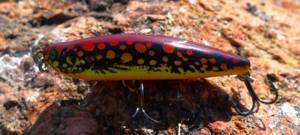
Autumn pike on walkers
With the onset of autumn, fishing with walkers does not lose its relevance. To begin with, it is worth baiting in open areas. If the predator is not detected, they proceed to fishing the border of grass thickets and free water, and then the walker is carried out at the very reeds. A hungry pike will sooner or later react and try to attack the bait.
From mid-October, the activity of the predator decreases, and aquatic vegetation drops lower and lower. At this time, on the contrary, you should first look for pike near the reeds, and only then fish open areas of the reservoir. When the time comes for the first severe frosts, fishing with walkers becomes practically fruitless, since pike most often ignore these baits.
Walker size for pike fishing

Today in fishing stores the assortment of walkers is already quite large, and the baits differ from each other, first of all, in shape and size.
As for the last characteristic, the optimal bait length for pike is 10 cm.
This is an almost universal size; walkers of this length can attract both trophy pike and smaller predators.
